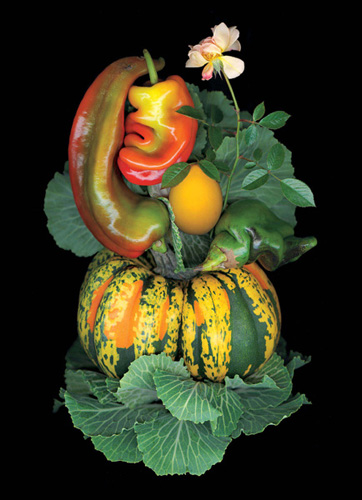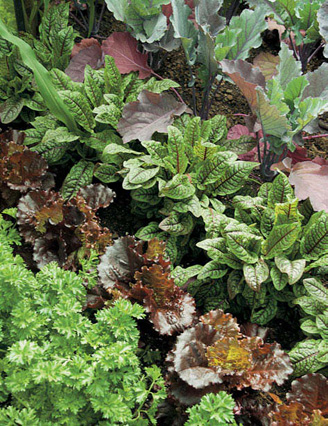
Vegetable gardening is having a Renaissance in the United States, and this time around, there is an emphasis on ornamental and edible qualities of unusual and beautiful fruits and edible leaves along with flowering plants. Quirky peppers might find roses between their rows. All sorts of squashes and gourds like ‘Goblin Eggs’ and colorful ‘Carnival’ add much to a garden where cabbage and kale deliver edible foliage.

There may be no more satisfying thing than to pluck a fruit or vegetable from your own garden and sample it fresh off the vine. Talk about devotion. Vegetable gardening might just be the most challenging outdoor version of our pastime, and that goes double if you hope to do it organically and sustainably, as we all do.
It starts with soil. You can dig or double dig, turning over the soil in two layers and adding organic matter. Or you can make raised beds in which you bring in your enriched soil and fill bottomless wooden boxes set on the ground with sides that are from ten to thirty inches high. But the most modern approach, no-till, preserves the inherent structure of the soil by not disturbing it. Each season, compost is added to the surface as plants are plugged into the earth, then the bed is mulched. In time, the compost incorporates through the same processes that built the soil through the years.
My garden is shady. I have few places where there is enough sunlight to grow tomatoes, which I allow to sprawl over makeshift supports up on the driveway. I grow winter squash on the southern edge of large plastic, faux terracotta pots, or a half whiskey barrel, and not alone. I plant upright ornamentals like Colocasia (elephant ears), and let the squash vines sprawl down over the container’s edge. My growing medium is soil-less: two parts coir, one part compost, and one part perlite. Vegetable plants, and especially those in containers, are “gross-feeders,” so they get frequent doses of a balanced, organic liquid fertilizer like a kelp and fish emulsion.
Some of the challenges of growing food are avoided by using containers. I can move them if need be for more sunlight. I can pick off bugs if they appear (without bending). Having edibles in several places helps keep the critters at bay.
A conventional vegetable garden will need a fence to keep out bunnies—buried about one foot underground, and coming up about two feet above it. (For groundhogs, also called woodchucks, add a Jack Russell terrier.) Then there are the things you cannot control, like the weather. One year, rain ruins your crops. The next, drought takes its toll,. When the weather forecaster says “another beautiful day without a cloud in the sky,” I want to scream.
Colorful greens: parsley, red leaf lettuce, beets, and kale.

Vegetable gardening is having a Renaissance in the United States, and this time around, there is an emphasis on ornamental and edible qualities of unusual and beautiful fruits and edible leaves along with flowering plants. Quirky peppers might find roses between their rows. All sorts of squashes and gourds like ‘Goblin Eggs’ and colorful ‘Carnival’ add much to a garden where cabbage and kale deliver edible foliage.